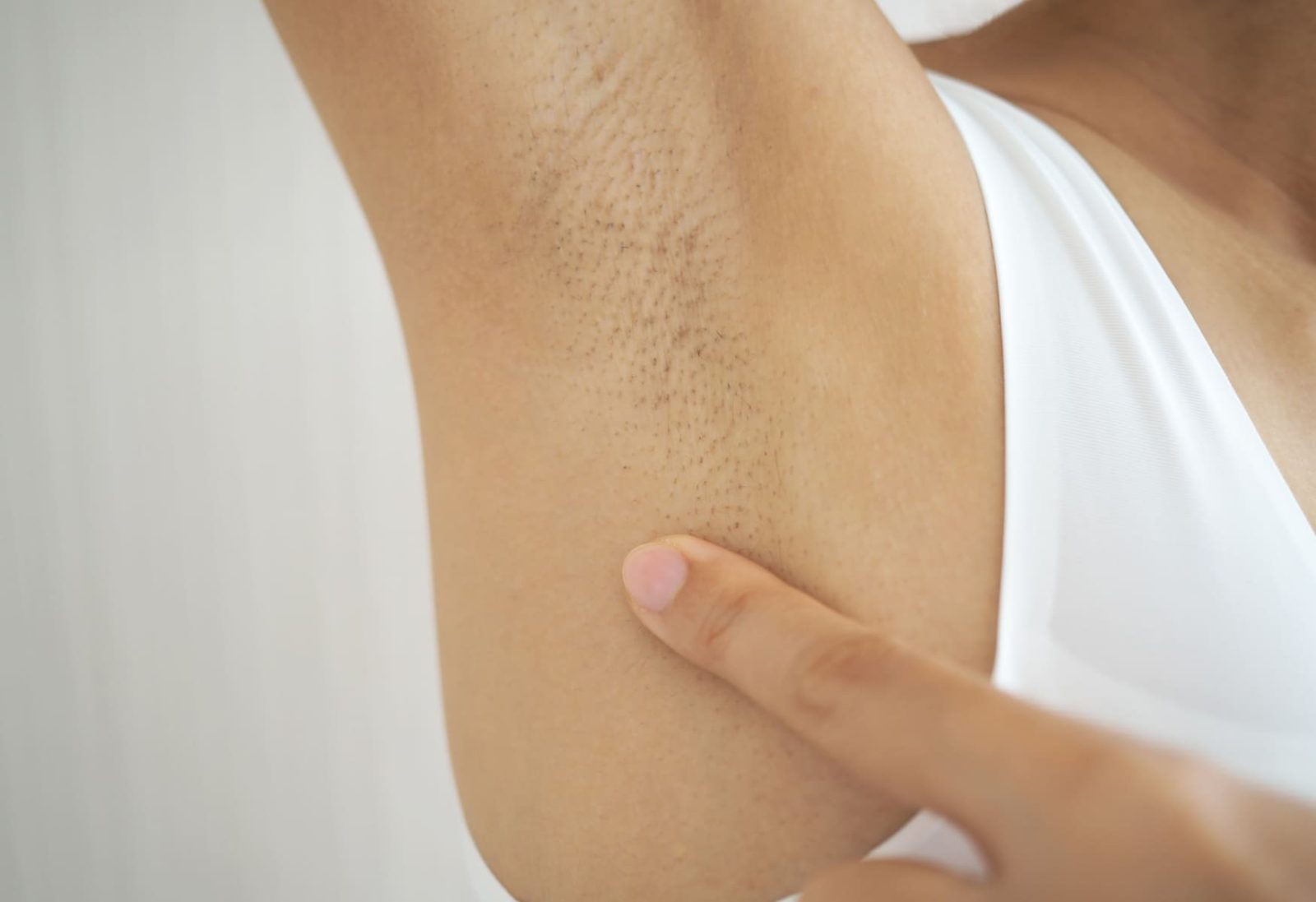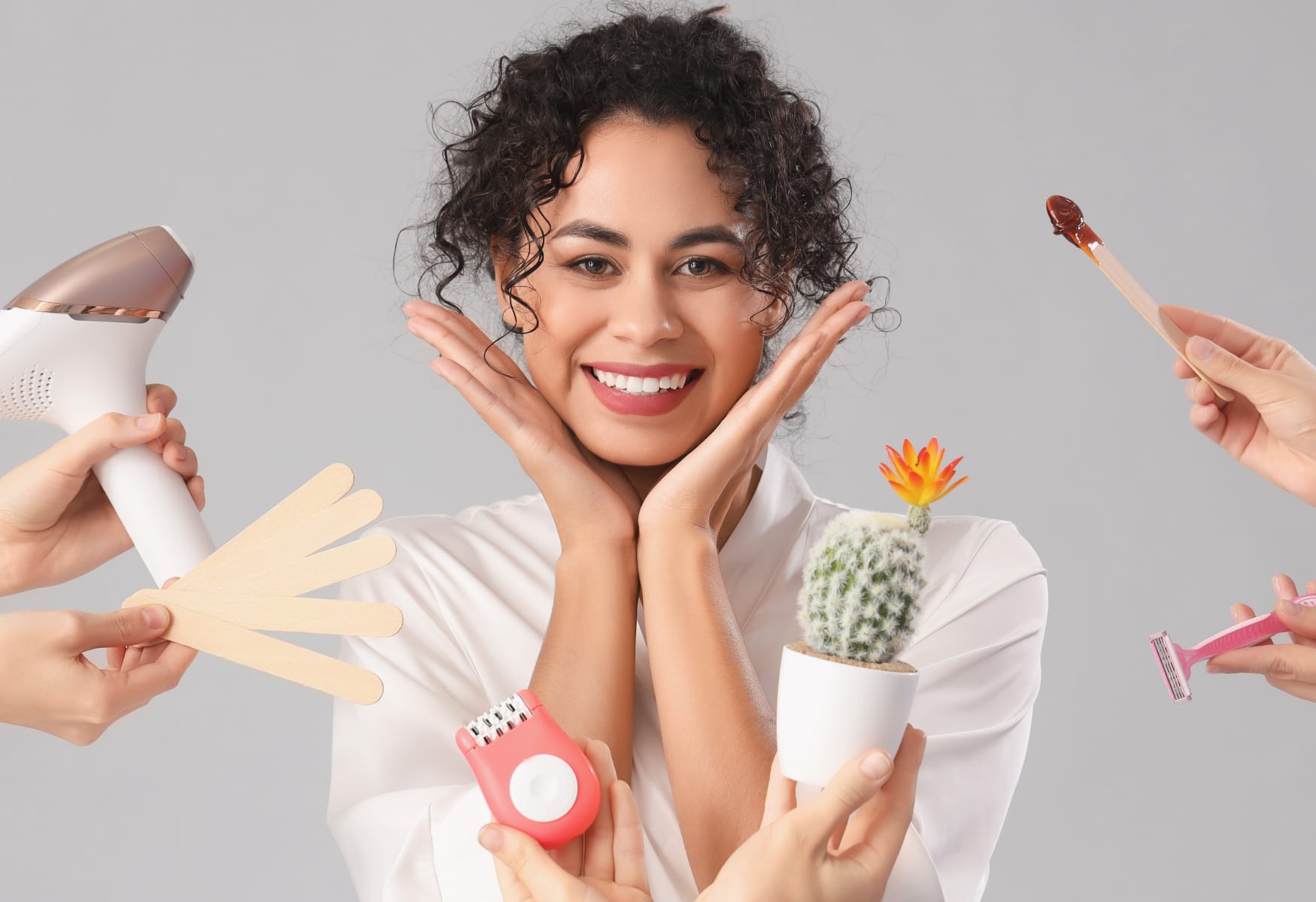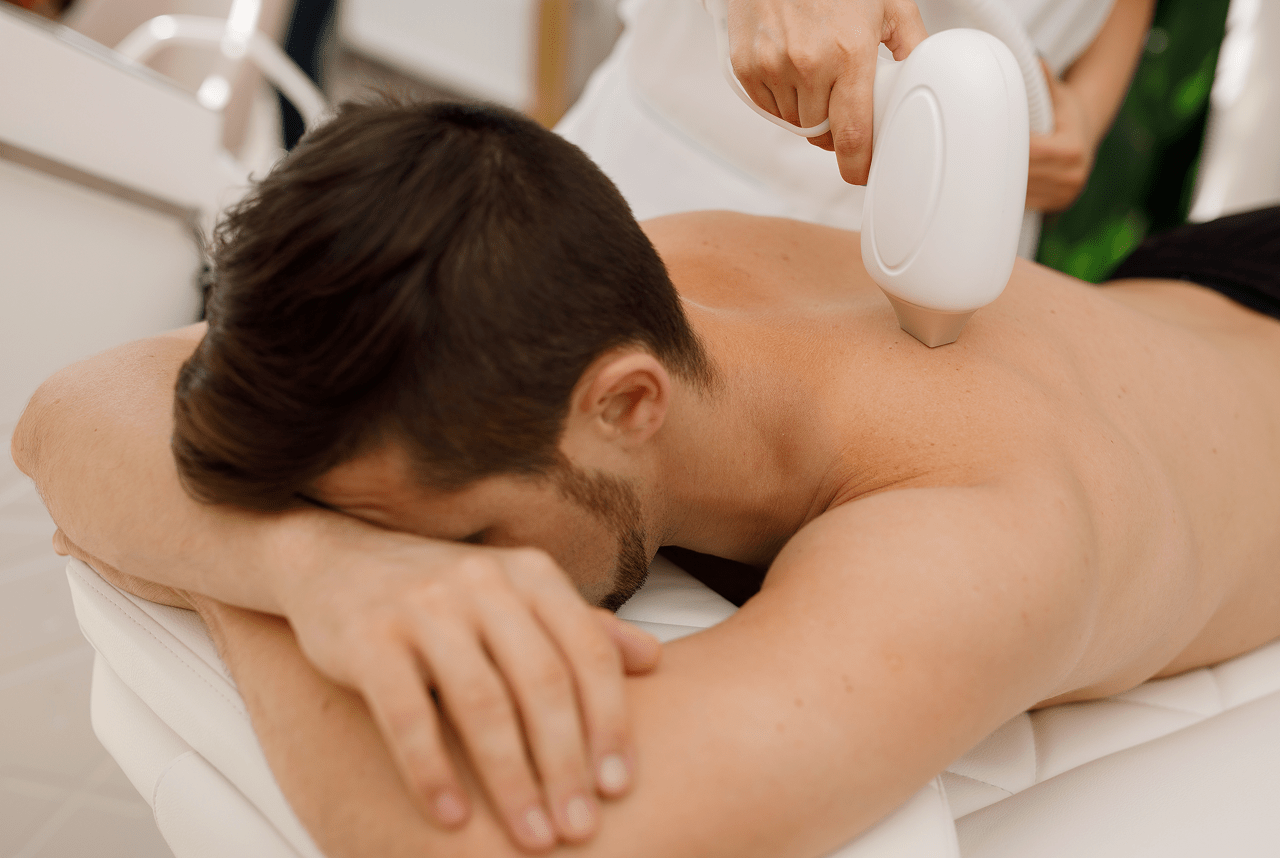There are many ways to get rid of unwanted hair or facial hair. However, not all of them are gentle on our skin, and many come with complications. A prime example of this is razor rash. In this article, we will discuss what causes this unpleasant condition and introduce the best ways to prevent and treat it.
Obsah
If you want to avoid the problem of razor rash once and for all, laser hair removal is the only solution. Permanent elimination of unwanted hair and always smooth skin without irritation – that’s something other methods can’t offer. Book your procedure and get an introductory discount by completing our quick quiz!
The most common causes of razor rash
Dull razors and blades
If you want to reduce the risk of razor rash, always use new, sharp razors. Shaving with dull razors leads to uneven hair removal, requiring you to apply more pressure or shave the same area repeatedly. This can irritate the skin, leading to rashes, bumps, or even infections.
Using a sharp razor minimizes the need for repeated shaving and reduces the razor’s contact with the skin, resulting in less irritation and a smoother shave. For optimal sharpness and hygiene, we recommend replacing the razor after a few uses.
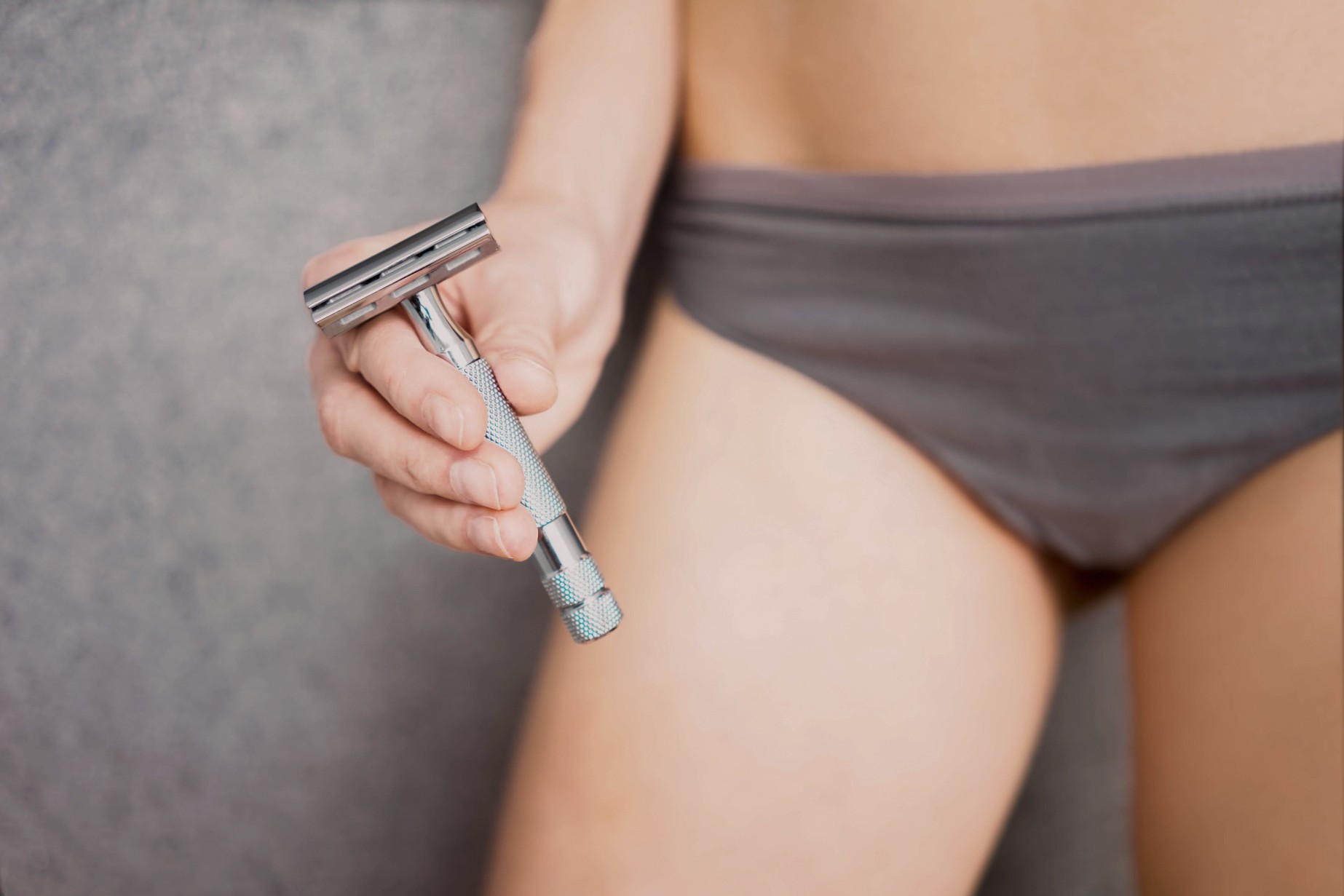
Insufficient skin preparation
Before shaving, you need to properly prepare your skin to make it more supple and soften the hair as much as possible. Ideally, start by washing the area with warm water, which helps open the pores and soften the hair. If the skin and hair are not adequately softened before shaving, the razor may drag against the skin and pull the hair instead of gliding smoothly over it. This can lead to irritation and rashes.
Whenever possible, you should also use shaving cream or gel, which hydrates the skin. The razor will then glide easily over the skin without unnecessary friction.
Improper shaving technique
Mastering the correct shaving technique helps prevent skin irritation and the formation of rashes.
Most people shave against the direction of hair growth because it removes the hair as close to the skin as possible. However, this method also increases the risk of ingrown hairs and irritation, as the hairs tend to change direction and sometimes grow back into the skin.
Shaving in the direction of hair growth is gentler on the skin, although it may require more passes to achieve a smooth result—this is why using a very sharp razor is so important to minimize the number of passes. Regarding shaving technique, guide the razor across the skin without excessive pressure to protect the skin from unnecessary irritation.
Bacterial Infections
Dirty razors can become a source of bacterial infections, leading to rashes. Using old or unclean razors can introduce bacteria into the tiny cuts that occur during shaving, resulting in inflammation, rashes, or even pus-filled pimples.
To prevent these complications, it’s important to thoroughly clean your razor after each shave and store it in a dry environment to avoid bacterial growth. In addition to regular replacement, you should never share your razor with others! Also, pay attention to the hygiene of your skin itself.
Using certain products
Applying shaving products that contain harsh chemicals or allergens can sometimes cause an allergic skin reaction, leading to rashes and discomfort. For shaving, it’s advisable to choose products specifically designed for sensitive skin and to perform a patch test on a small area of skin before using them. Avoid fragranced products and those containing alcohol, as these substances can further dry out and irritate the skin.
Sensitive skin
What are the symptoms of razor rash?
Razor bumps on Intimate areas
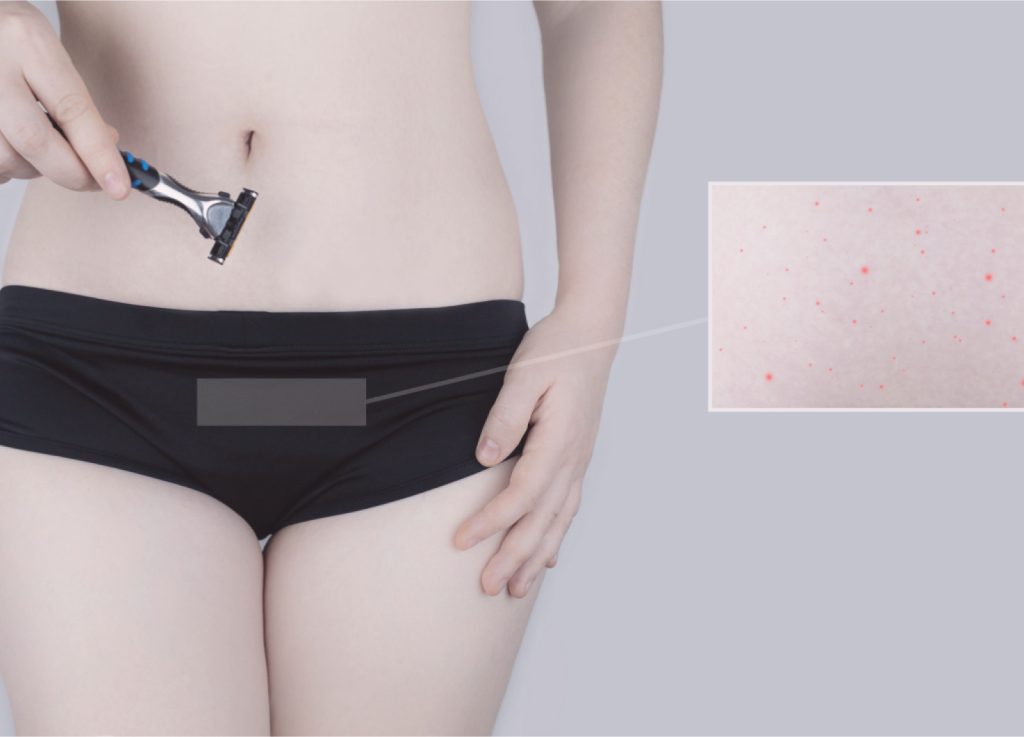
Razor rash on legs
Razor bumps in the armpits
In the armpits, the rash may look like red, itchy patches covered with bumps. This is often due to a combination of shaving irritation and the irritation caused by sweat and friction, as the armpits are rich in sweat glands. Ingrown hairs are also a common issue here. Permanent solutions like underarm hair removal can be effective.
Razor rash on the buttocks
Top tips to prevent Itching after shaving
Prepare your skin properly
Cleanse and moisten your skin with warm water before shaving to open pores and soften hair. Use a high-quality shaving cream or gel to reduce friction and hydrate.
Use a sharp razor
Always use a sharp and clean razor, and replace blades regularly.
Pay attention to shaving technique
Shave in the direction of hair growth, not against it, to minimize irritation and the chance of ingrown hairs. Avoid repeatedly going over the same area if possible.
Post-shaving care matters
After shaving, rinse your skin with cold water to close the pores. Apply a soothing balm or cream to calm the skin.
Hydrate
Regularly hydrate your skin to keep it supple and less prone to irritation. Use moisturizers suitable for your skin type and maintain adequate fluid intake.
Avoid tight clothing
After shaving, avoid tight clothing that can rub and irritate the skin, especially in sensitive areas like the intimate zones or underarms.
Exfoliate
Regularly exfoliate to remove dead skin cells, which can help prevent ingrown hairs and keep your skin smooth.
Test shaving products on a small area
If you have sensitive skin, test new shaving products on a small area to ensure they don’t cause irritation before applying them to larger areas.
Consider laser hair removal
Permanent hair removal offers a long-term solution to hair removal issues and eliminates the problems associated with shaving.

How to treat razor rash
Sooth the skin
Apply a cold compress or soothing gel to the affected area to calm the skin and reduce inflammation.
Hydrate
Use a cream designed for sensitive skin to help alleviate irritation and moisturize the skin.
Avoid further shaving
Allow the skin time to heal by avoiding shaving or other hair removal methods until the rash resolves.
Use an antiseptic solution
Apply a mild antiseptic solution to the affected area to disinfect and prevent infection.
Avoid Irritants
Avoid touching the rash with dirty hands and steer clear of irritating substances like perfumes or certain creams and oils.
Wear loose clothing
Loose and breathable clothing will reduce friction on the affected area and promote healing.
Use over-the-counter medications
For itching, you can use an over-the-counter hydrocortisone cream or other anti-itch products. Follow the instructions on the label.
Seek professional help
If the rash persists or worsens, consider seeing a dermatologist for further evaluation and treatment.
How long does razor rash last?
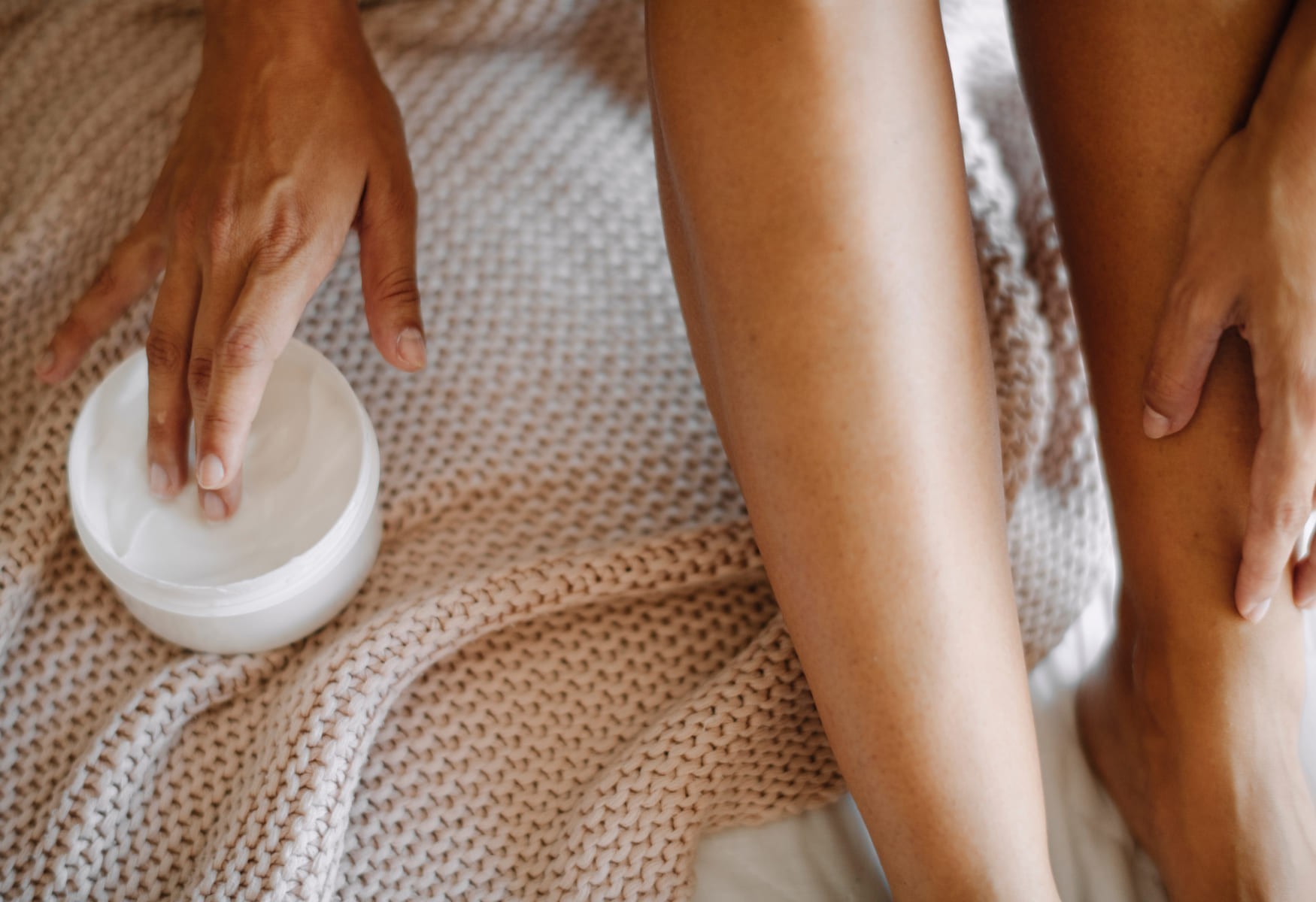
Laser hair removal as the most effective prevention for razor rash
Laser hair removal is the most effective preventative method against razor rash. With this technology, razor rash can finally become a thing of the past.
Unlike traditional hair removal methods like shaving or waxing, laser hair removal targets the hair follicles directly to weaken and eventually stop their growth.
The procedure uses a concentrated beam of light that penetrates the skin and is absorbed by the pigment in the hair. This heat destroys the hair follicle, preventing further hair growth.
This means the end of constant shaving and procedures that increase the risk of irritation and rashes. Say goodbye to ingrown hairs, and no more buying new razors or waxing products.
Laser hair removal is suitable for both men and women, works on various skin types, and can be used on almost any part of the body. This includes sensitive areas such as underarms, intimate areas, legs, face, or back, where razor rash is a common issue.

